Light, shadow, and highlight — this is always a great combination for creating portraits from a lighting point of view. This is the interesting part: changing the intensity of the highlight or the tone in the shadows while maintaining the exposure can produce a different feel to an image, from being dramatic to soft and subtle, and that is what is so intriguing about photography.
We all have our own taste in lighting and this is what makes photography so exciting. The more we share information on how images are created, the more it evolves, grows, and intensifies the urge to pick up a camera and explore it all over again!
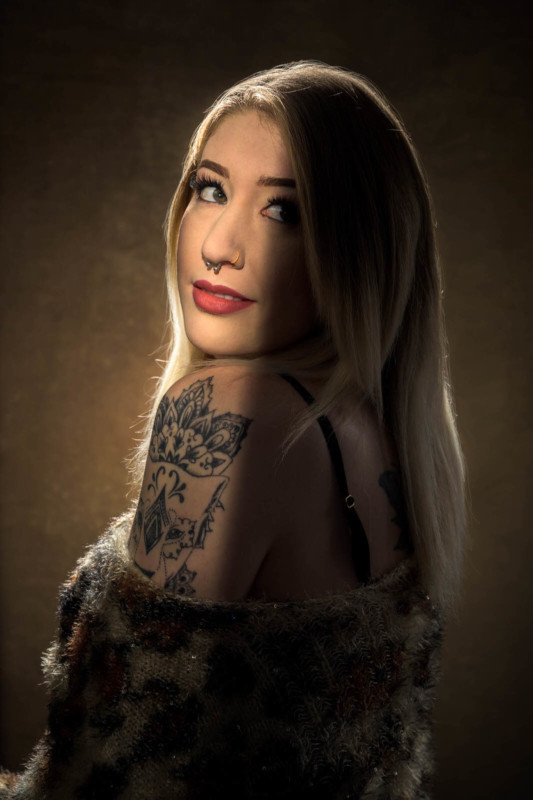
Before we dive into this photo, you can achieve this look with simple lights (speedlights, etc), so don’t get too hung up on gear. The position of the lighting is more important, especially as I am working in a very small studio space.
Let’s break down this image. My starting point is the background light. I position a standard reflector roughly about 2 feet away from the background to create a ball of light behind the subject. I have a 60-degree grid fitted as I preferred the amount of spread it produces at this distance. You can fine-tune this to your desired look by simply moving the light closer to the background (making the ball of light smaller) or further away ( making the ball of light bigger.)
Once I am happy with the position of the background light and it’s lighting up some of the lovely textures in my Artery hand-painted backdrop, the next step is to create that strip of light coming down Ashleigh’s face.
There are a couple of ways you can achieve this and the most inexpensive way is to make a slit in some black card or paper and fire a light through that creating a strip of light on your subject. The only problem with this is it’s cumbersome and you don’t have a whole load of control over the light.
To make this setup more efficient and more effective, I am using an optical snoot from PIXAPRO, a great tool that allows you to add differently-shaped gobos easily and quickly allowing for a very effective way to create this look.
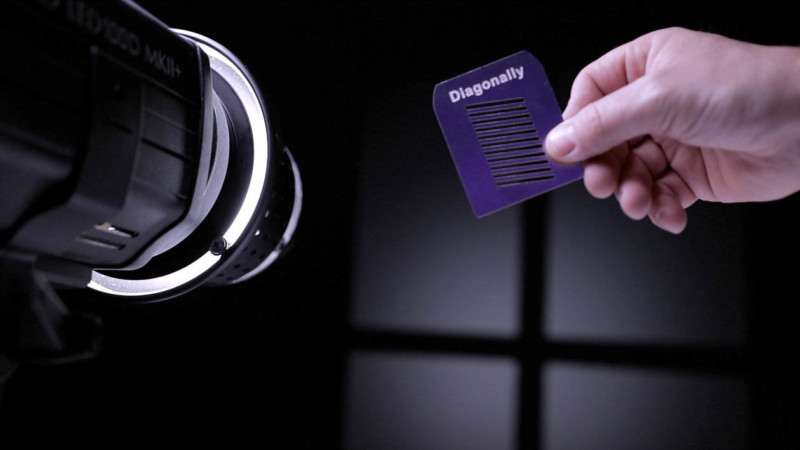
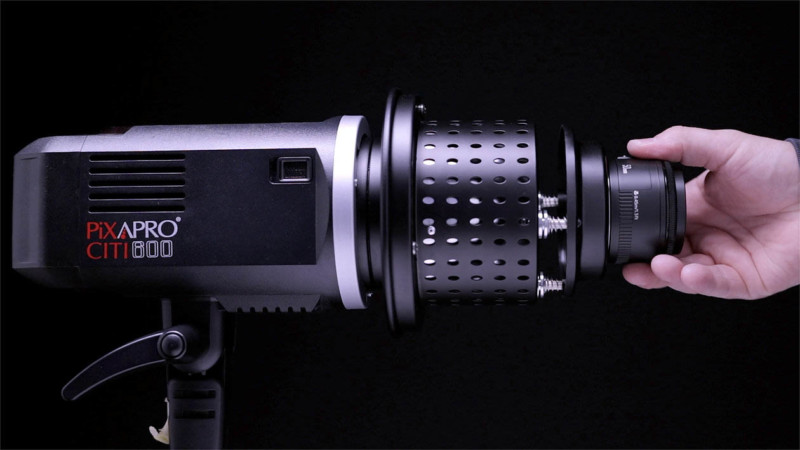
To make the most of this modifier, I recommend you use a strobe with a modeling light. This way, you can see where the shape of the light will fall on your subject. You can use it without a modeling light, but that will slow the process down.
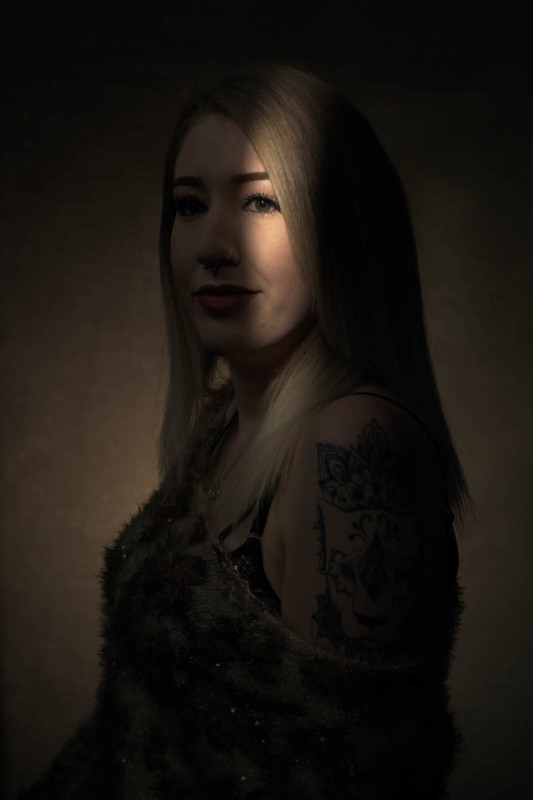
The positioning of the slit of light comes down to taste. I wanted the light illuminating one eye and the side of her arm.
The reason I use this optical snoot is it allows you full control over the shadows. You use the lens to focus the light, which can produce either a very defined shadow line or a very diffused one. Again, this comes down to taste.
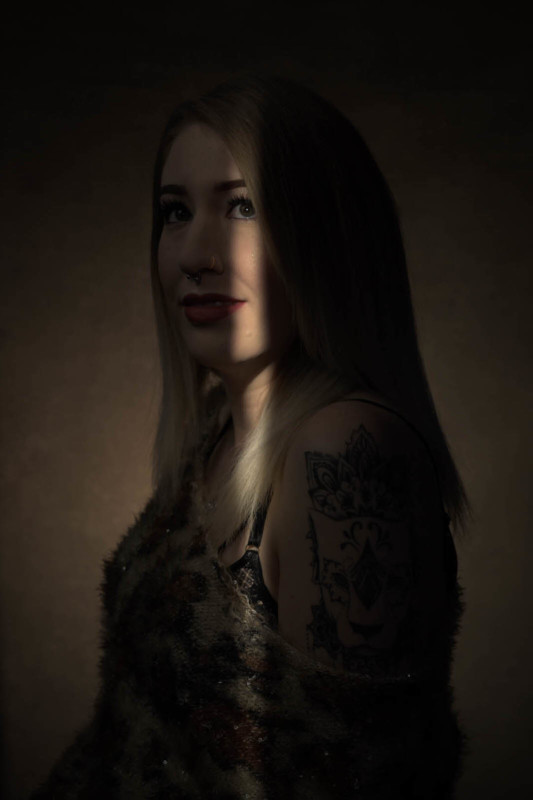
The next step was to add a hair light. This is placed directly behind and above our model and fitted with a standard reflector. The intensity of the light comes down to how harsh or soft you want it to look. I always feel the harsher the light, the more dramatic it looks. Either way, it has a great impact on any image.
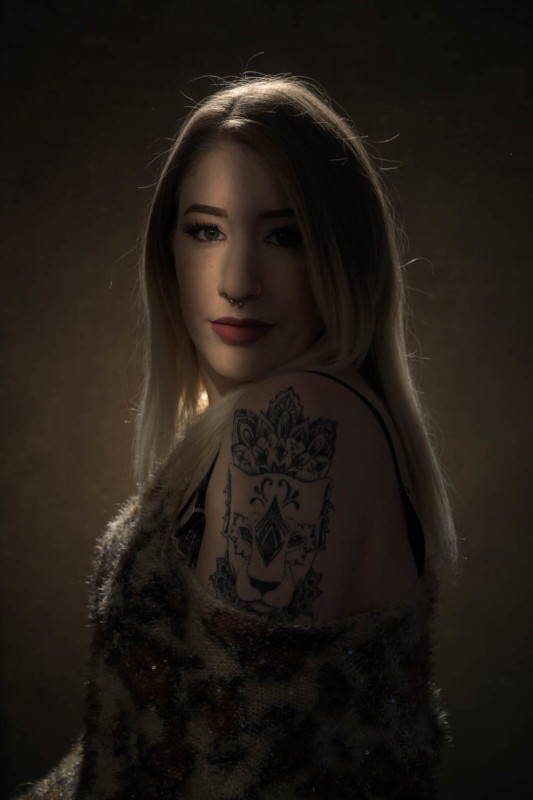
Using the hair light gives great separation from the background. With all three lights in position, I wanted to use the hair light and bounce some of that light back into our model to lift the shadows slightly. This was simply achieved using a 5-in-1 reflector to reflect some of that light back in.
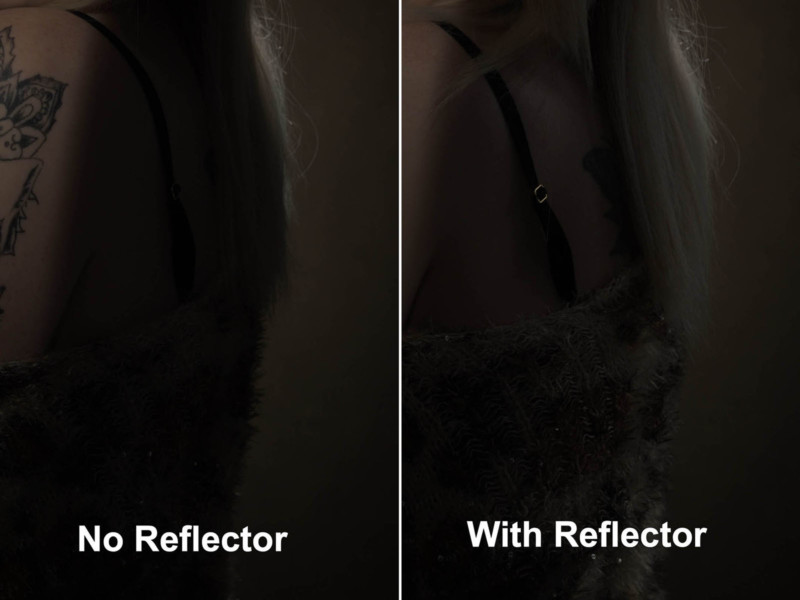
It’s a subtle effect, but it does enough to lift those shadows.
With everything in position, we can now get our shot. I haven’t metered for the light, as I shoot tethered to my laptop. This way, I just adjust the exposure accordingly as I see the images on the screen. I also shoot raw. When I develop the image in Photoshop, mainly saturation, contrast, and sharpening are adjusted as well as a tweak to the color temperature.
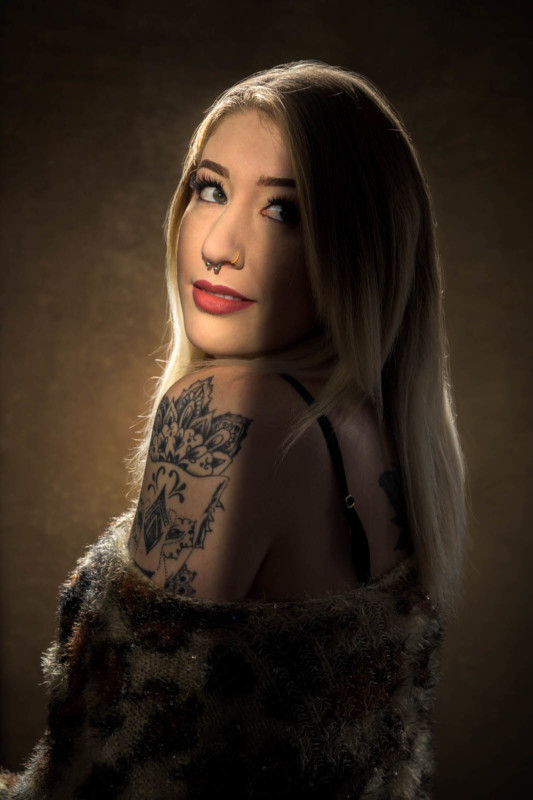
Here’s the complete lighting diagram:
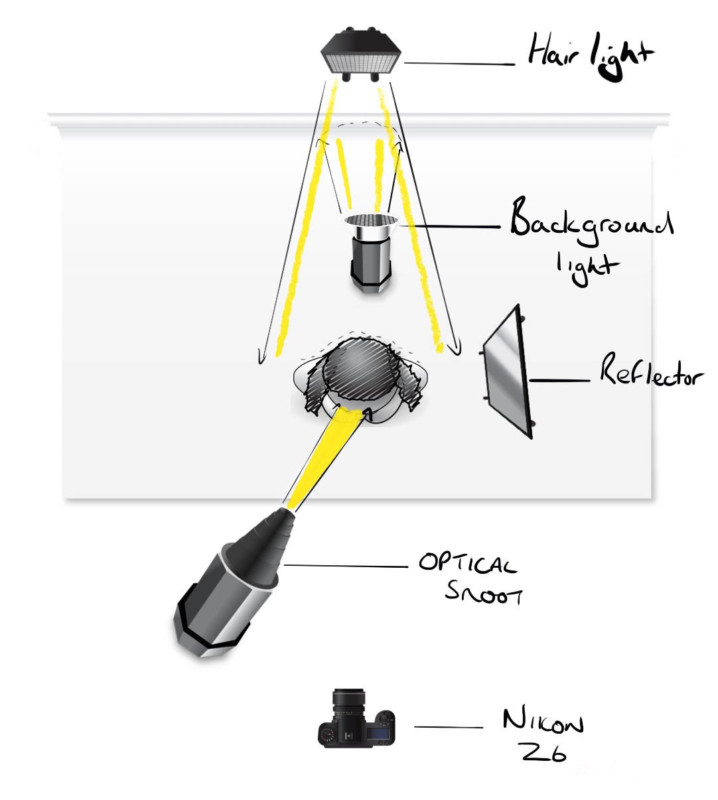
There you go, folks. I hope you find this post useful. If you did, please consider subscribing to my website and my YouTube channel.
About the author: Barry Mountford is a photographer based in Gateshead, England. The opinions expressed in this article are solely those of the author. You can find more of Mountford’s work on his website, Facebook, Twitter, and Instagram. This article was also published here.